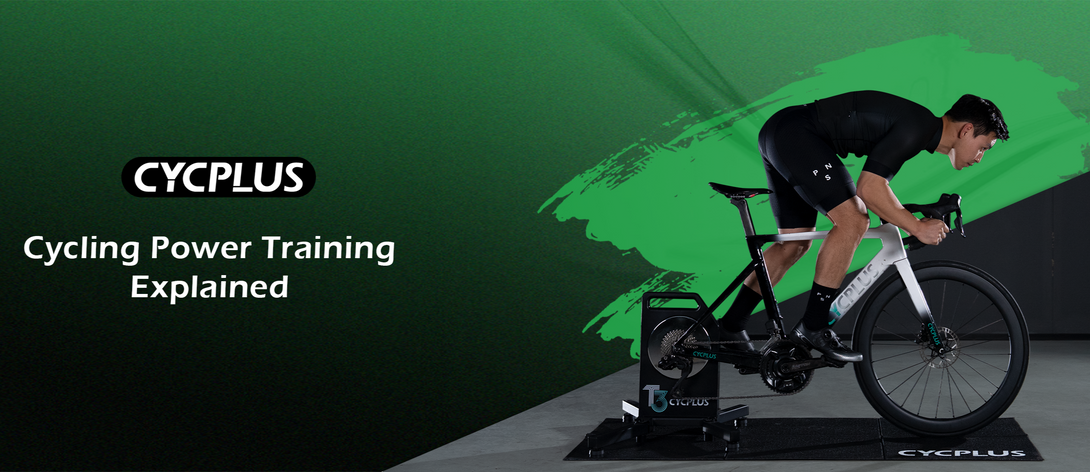Cycling Power Training Explained: LSD, Tempo, and HIIT for Every Rider
March 17, 2025

For cyclists aiming to improve performance, power-based training is one of the most effective scientific approaches. By using power (watts) and FTP (Functional Threshold Power) as references, riders can target different energy systems and physiological adaptations. Among the most proven strategies are LSD (Long Slow Distance), Tempo Training, and HIIT (High-Intensity Interval Training). Together, they form a complete training pyramid, balancing endurance, threshold power, and explosive strength.
1. LSD — Long Slow Distance
Logic: Aerobic foundation × Optimized fat metabolism
Zone: 55–75% FTP (Zone 1–2)
Energy System: Predominantly aerobic oxidation, with fat as the main fuel (>60% of energy).
Key Benefits:
- Increases mitochondrial density and capillary networks, improving cardiovascular efficiency.
- Enhances fat oxidation, conserves glycogen, and delays “hitting the wall.”
- Improves slow-twitch muscle efficiency, lowers resting heart rate, and strengthens recovery.
Physiological Adaptations:
- Mitochondrial proliferation in cardiac cells (better heart endurance).
- Greater intramuscular fat storage (improved fat utilization).
- Stronger parasympathetic adaptation (lower resting HR).
Training Protocol:
2–6 hours at steady Zone 2 intensity (“conversation pace”), keeping power/HR within ±5%.
Best for:
Endurance riders, beginners building a fitness base, and cyclists preparing for long-distance events.
2. Tempo Training
Logic: Lactate threshold control × Aerobic power expansion
Zone: 76–90% FTP (Zone 3)
Energy System: Mixed aerobic–anaerobic, with glycogen contributing ~50%.
Key Benefits:
- Improves lactate clearance and shuttling.
- Raises lactate threshold, extending sustainable power output.
- Builds tolerance to muscle acidity, delaying fatigue and strengthening mental toughness.
Physiological Adaptations:
- Increased MCT1/MCT4 expression (faster lactate transport).
- Denser capillaries around type IIa muscle fibers (better oxygen delivery).
- Enhanced glycogen synthase activity (faster glycogen replenishment).
Training Protocol:
Example — 2×30 minutes at 85% FTP with 5 minutes rest between sets. Maintain steady effort with minimal power fluctuation.
Best for:
Time trialists, riders looking to improve steady cruising speed, and athletes preparing for long-duration races.
3. HIIT — High-Intensity Interval Training
Logic: VO₂max breakthrough × Anaerobic tolerance
Zone: 106–150% FTP (Zone 5+)
Energy System: Primarily glycolysis and phosphocreatine stores.
Key Benefits:
- Boosts VO₂max and cardiovascular capacity (“raising the ceiling”).
- Increases muscle buffering capacity and anaerobic endurance.
- Improves neuromuscular coordination and explosive power.
Physiological Adaptations:
- Enlarged ventricular volume (greater stroke volume).
- Enhanced bicarbonate buffering system (better acid tolerance).
- Increased mitochondrial density in fast-twitch fibers (better anaerobic–aerobic transition).
Training Protocol:
Progressive pyramid intervals, e.g.:
- 4×4 min @ 120% FTP, 4 min recovery
- 3×3 min @ 130% FTP, 3 min recovery
- 2×1 min @ 150% FTP, 2 min recovery
Every set should push the limit for maximum adaptation.
Best for:
Competitive cyclists aiming to improve sprinting, attacking power, or training under time constraints.
4. How the Three Work Together
Metabolic Coverage:
LSD: Builds aerobic base with fat metabolism.
Tempo: Raises lactate threshold and sustainable power.
HIIT: Pushes anaerobic ceiling and sharpens race-readiness.

Periodization:
Base Phase: LSD (60%) + Tempo (30%) → Build aerobic engine.
Build Phase: HIIT (40%) + Tempo (30%) → Increase threshold and power.
Race Prep: HIIT (30%) + Tempo (20%) → Maintain peak condition.
Monitoring & Red Flags:
LSD: HR drift >10% → intensity too high.
Tempo: Power fluctuation >±5% → adaptation compromised.
HIIT: Final interval drops >8% in power → over-fatigue.
Conclusion
Think of power training as a pyramid:
LSD is the foundation (endurance).
Tempo is the middle layer (threshold).
HIIT is the peak (anaerobic power).
Neglecting any layer can create imbalances. Over-focusing on HIIT may bring short bursts of high power but poor endurance; sticking only to LSD may leave you with stamina but no sprint. The key lies in balanced integration, so you can ride longer at low intensity and sustain higher power when it really matters.


